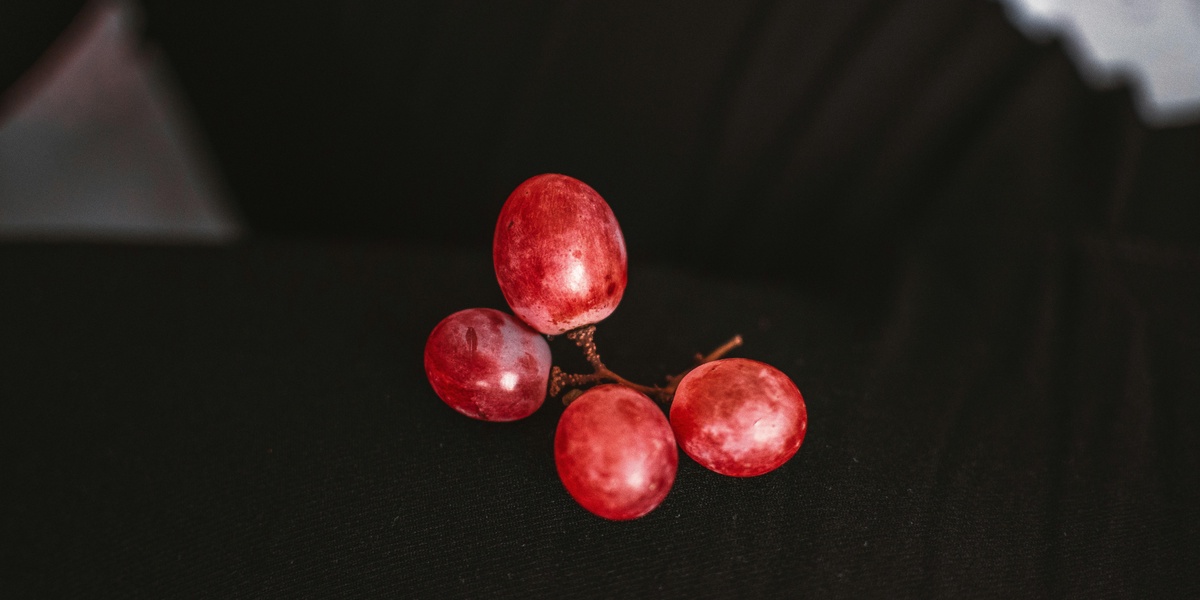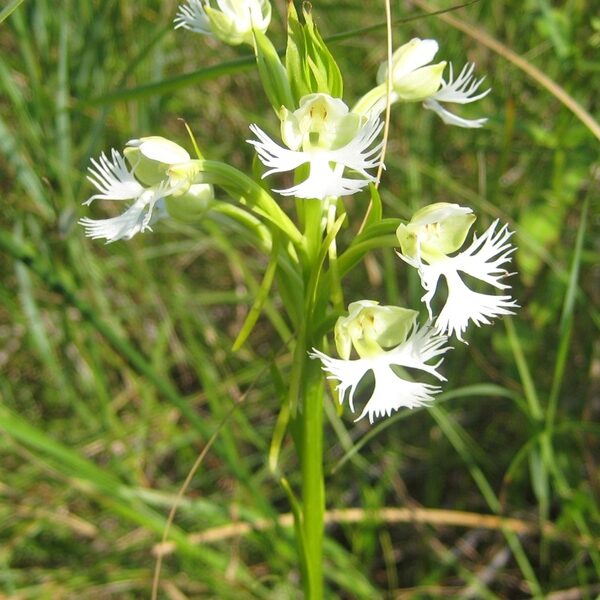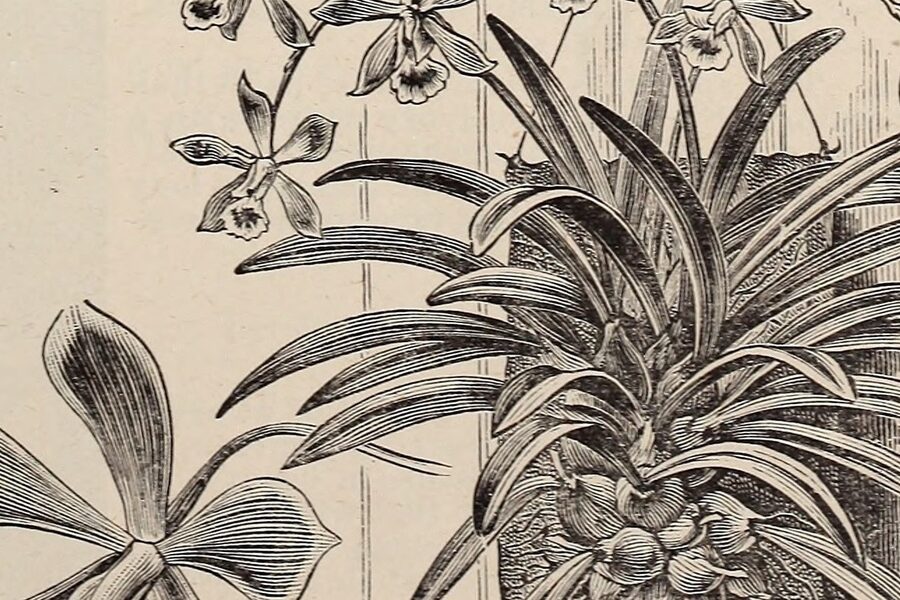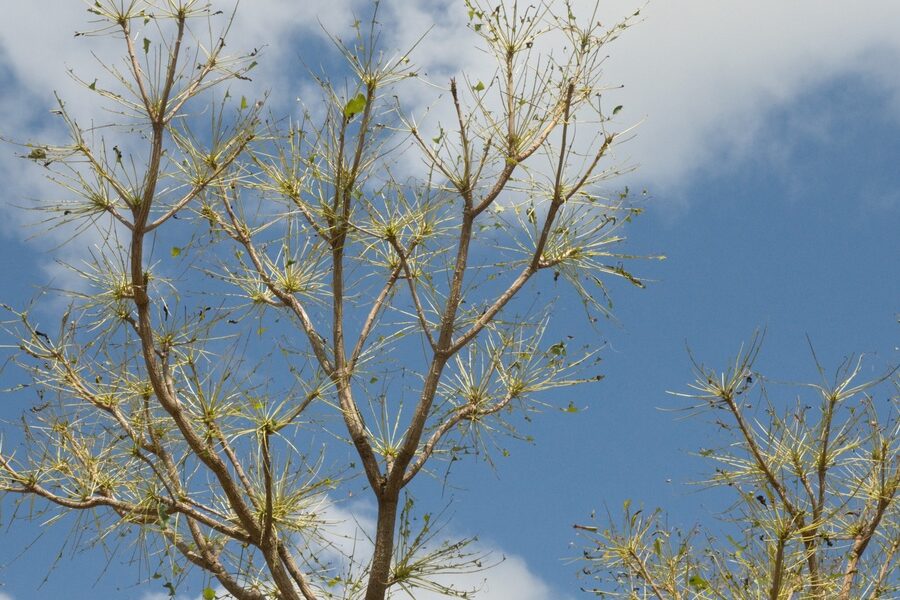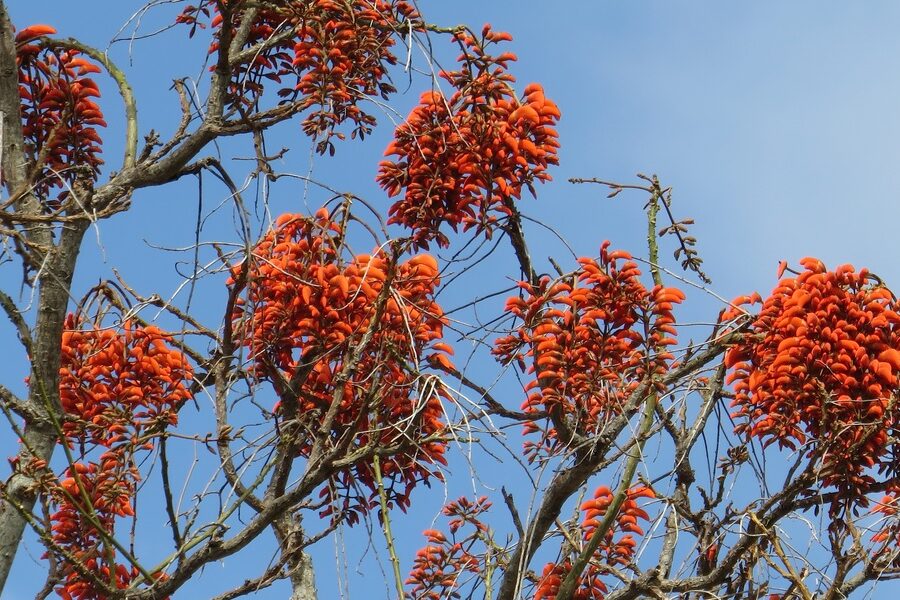Chile’s long, varied coastline, valleys and mountain slopes create microclimates that support a wide spectrum of fruit — from backyard trees to commercial orchards and wild finds at higher elevations. Walking a market in Santiago or a coastal town quickly shows how regional climate shapes flavor and availability.
There are 44 Fruits of Chile, ranging from Apple to White strawberry (fragaria chiloensis var.). Each entry lists Scientific name,Status,Regions & season (months) so you can see origin and harvest timing; you’ll find below.
How can I tell which fruits are in season when I visit Chile?
Chile is in the Southern Hemisphere, so summer is roughly December–February and most fresh fruits peak then; autumn (March–May) brings late-harvest varieties. Use the Regions & season (months) column to match locations and months, and check local markets or producers for current availability.
Are any of these fruits rare or legally protected?
The Status column flags native, introduced, cultivated or rare entries; some wild species have conservation concerns. For protection rules and harvesting restrictions consult local authorities (regional offices, CONAF) or IUCN listings before foraging or exporting.
Fruits of Chile
| Name | Scientific name | Status | Regions & season (months) |
|---|---|---|---|
| Maqui | Aristotelia chilensis | Native | Los Lagos, Los Ríos, La Araucanía; Jan–Mar |
| Calafate | Berberis microphylla | Native | Aysén, Magallanes, Los Lagos; Jan–Mar |
| Murta (Chilean guava) | Ugni molinae | Native | Los Lagos, Los Ríos, La Araucanía; Dec–Feb |
| Arrayán berry | Luma apiculata | Native | Los Lagos, Los Ríos, Ñuble; Jan–Feb |
| Chilean strawberry (beach strawberry) | Fragaria chiloensis | Native | Coastal central and southern Chile; Oct–Feb |
| Strawberry (cultivated) | Fragaria × ananassa | Introduced/Cultivated | Central Chile (Metropolitana, O’Higgins, Maule); Oct–Mar |
| Avocado (palta) | Persea americana (Hass and other cultivars) | Introduced/Cultivated | Coquimbo to Bío-Bío; Aug–Mar |
| Grape (table & wine) | Vitis vinifera | Introduced/Cultivated | Central Valley, Maule, O’Higgins; Feb–Apr |
| Apple | Malus domestica | Introduced/Cultivated | Ñuble, Los Lagos, Los Ríos; Feb–Apr |
| Pear | Pyrus communis | Introduced/Cultivated | Ñuble, Biobío, Maule; Feb–Mar |
| Peach | Prunus persica | Introduced/Cultivated | Central Valley, O’Higgins, Maule; Dec–Mar |
| Nectarine | Prunus persica var. nucipersica | Introduced/Cultivated | Central Valley, O’Higgins, Maule; Dec–Mar |
| Apricot (damasco) | Prunus armeniaca | Introduced/Cultivated | Central Valley, Coquimbo; Dec–Feb |
| Plum | Prunus domestica | Introduced/Cultivated | Central and southern valleys; Dec–Mar |
| Blueberry (arándano) | Vaccinium corymbosum (and hybrids) | Introduced/Cultivated | Maule, Biobío, Los Lagos; Nov–Feb |
| Raspberry (frambuesa) | Rubus idaeus | Introduced/Cultivated | Central and southern valleys; Nov–Jan |
| Blackberry (mora) | Rubus ulmifolius complex | Naturalized | Central to southern Chile; Nov–Jan |
| Fig (higo) | Ficus carica | Introduced/Cultivated | Central Chile, coastal valleys; Jan–Mar |
| Feijoa (guayabo del Brasil) | Acca sellowiana | Introduced/Cultivated | Central Chile (Metropolitana to Maule); May–Jul |
| Passionfruit (maracuyá) | Passiflora edulis | Introduced/Cultivated | Coastal north and central valleys; Feb–May |
| Tamarillo (tomate de árbol) | Solanum betaceum | Introduced/Cultivated | Central valleys, coastal zones; Apr–Jul |
| Cherimoya (chirimoya) | Annona cherimola | Introduced/Cultivated | Coastal northern and central valleys; Mar–Jun |
| Lucuma | Pouteria lucuma | Introduced/Cultivated | Arica-Parinacota to Coquimbo (northern valleys); Mar–Jun |
| Pomegranate (granada) | Punica granatum | Introduced/Cultivated | Coquimbo, Valparaíso, Metropolitana; Mar–May |
| Kiwi | Actinidia deliciosa | Introduced/Cultivated | Los Lagos, Los Ríos; Apr–May |
| Olive | Olea europaea | Introduced/Cultivated | Coquimbo, Valparaíso, Metropolitana; Apr–Jun |
| Loquat (nispero) | Eriobotrya japonica | Introduced/Cultivated | Central Chile, coastal valleys; May–Jun |
| Mulberry (mora blanca/negra) | Morus alba, Morus nigra | Naturalized/Introduced | Central and southern Chile; Nov–Jan |
| Pepino dulce (pepino melon) | Solanum muricatum | Introduced/Cultivated | Coquimbo, Valparaíso, Metropolitana; Oct–Feb |
| Prickly pear (tuna) | Opuntia ficus-indica | Naturalized | Coastal north and central; Dec–Mar |
| Chañar | Geoffroea decorticans | Native | Atacama, Coquimbo, northern valleys; Jun–Sep |
| Peumo | Cryptocarya alba | Native | Central Chile (Metropolitana, O’Higgins, Valparaíso); Dec–Feb |
| Quince (membrillo) | Cydonia oblonga | Introduced/Cultivated | Central and southern valleys; Mar–Jun |
| Orange (naranja) | Citrus sinensis | Introduced/Cultivated | Coquimbo to Metropolitana; Jun–Oct |
| Mandarin (mandarina) | Citrus reticulata | Introduced/Cultivated | Coquimbo, Valparaíso, Metropolitana; May–Aug |
| Lemon (limón) | Citrus limon | Introduced/Cultivated | Central and northern valleys; Year-round (peaks Jun–Nov) |
| Grapefruit (pomelo) | Citrus × paradisi | Introduced/Cultivated | Coquimbo, Valparaíso; Jun–Sep |
| Pitaya (dragon fruit) | Hylocereus undatus and hybrids | Introduced/Cultivated | Arica-Parinacota, Coquimbo (northern orchards); Dec–Mar |
| Blackcurrant (grosellero negro) | Ribes nigrum | Introduced/Cultivated | Maule, southern valleys; Dec–Feb |
| Boysenberry | Rubus × loganobaccus | Introduced/Cultivated | Central and southern valleys; Nov–Jan |
| White strawberry (fragaria chiloensis var.) | Fragaria chiloensis subsp. chiloensis | Native | Coastal central Chile; Oct–Feb |
| Atemoya | Annona × atemoya | Introduced/Cultivated | Coastal and interior northern valleys; Mar–Jun |
| Kiwiberry (hardy kiwi) | Actinidia arguta | Introduced/Cultivated | Los Lagos, central valleys (small-scale); Mar–May |
| Morroncillo (native berry) | Berberis darwinii | Native | Chilean Patagonia, Los Lagos; Jan–Feb |
Images and Descriptions
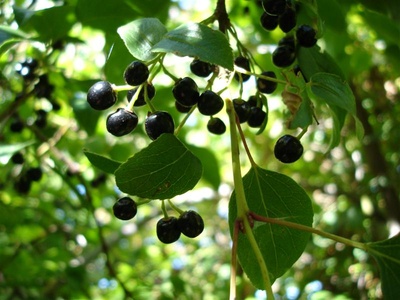
Maqui
Deep purple berries prized for antioxidant-rich juice and a sweet-tart flavor. Eaten fresh, in jams, syrups or wellness powders; iconic Patagonian wild fruit often sold at markets and used in artisanal liqueurs and desserts.
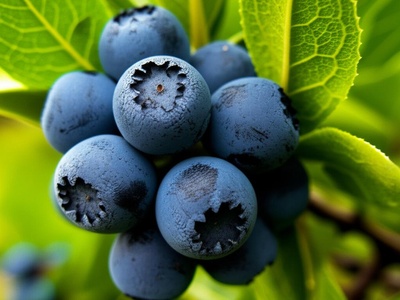
Calafate
Dark blue berries with a sweet-tart, slightly resinous taste. Famous in Patagonia for jams, pies and liqueurs; local legend promises a return to the region if you eat the calafate, making it a popular souvenir flavor.
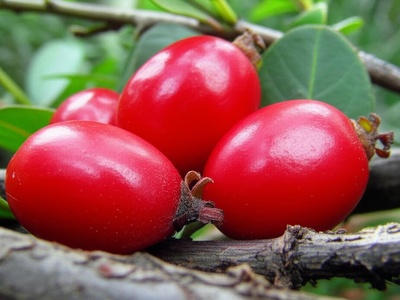
Murta (Chilean guava)
Small aromatic berries with a sweet, floral flavor reminiscent of guava and strawberry. Used fresh, in jams and desserts or fermented into chicha; common in coastal and Valdivian forests and artisanal markets.
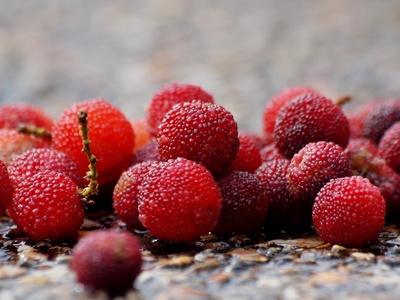
Arrayán berry
Glossy dark berries that are mildly sweet and slightly spicy. Eaten raw or made into syrups and jams; the arrayán tree’s ornamental bark makes the fruit familiar along southern riverbanks and parks.

Chilean strawberry (beach strawberry)
The wild ancestor of garden strawberries, with large aromatic fruits and intense strawberry flavor. Found on dunes and rocky coasts; eaten fresh, used in traditional sweets and prized by foragers.
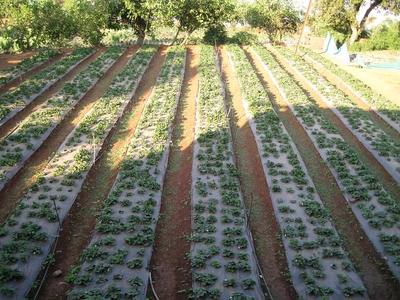
Strawberry (cultivated)
The common market strawberry, sweet and juicy with varied cultivars. Widely grown for fresh sale and processing into jams, desserts and juices across Chile’s central valleys.
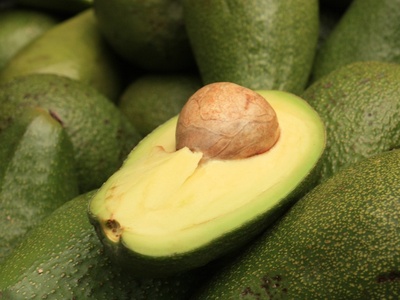
Avocado (palta)
Creamy, rich fruit with buttery texture and mild flavor. Central to Chilean cuisine as palta, used in salads, sandwiches, and guacamole; major export crop with year-round market presence during season.

Grape (table & wine)
Juicy table grapes and wine varieties grown across central Chile. Flavors range from sweet and crisp to complex wine grapes; eaten fresh, dried as raisins, or fermented into celebrated Chilean wines.

Apple
Crunchy and sweet-tart depending on cultivar. Widely grown in southern orchards for fresh eating, baking, cider and export; a staple fruit in Chilean markets and home kitchens.
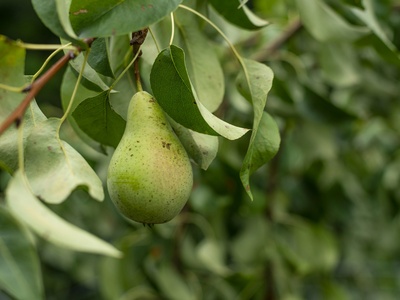
Pear
Juicy and aromatic with a smooth texture. Common for fresh eating, poaching, preserves and commercial processing; grown in temperate southern orchards and sold domestically and abroad.
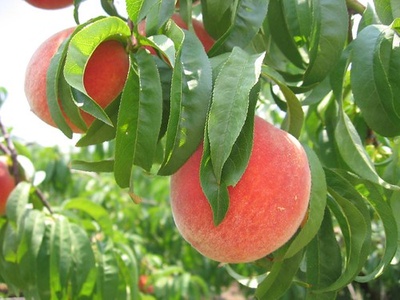
Peach
Sweet, fragrant stone fruit with juicy flesh. Eaten fresh, canned, or made into jams and desserts; summer favorite in markets and backyard trees across central Chile.
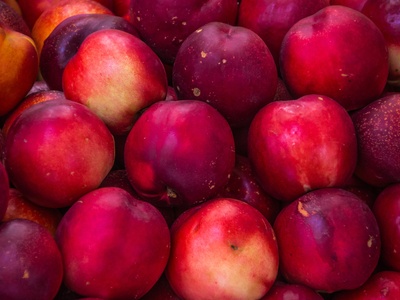
Nectarine
Smooth-skinned peach with sweet, juicy flesh and intense aroma. Popular fresh fruit and for preserves; commonly grown alongside peaches in Chile’s summer orchards.
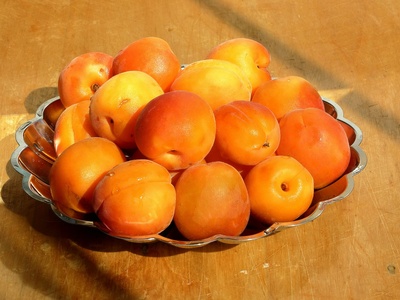
Apricot (damasco)
Sweet-tart stone fruit with fragrant flesh. Eaten fresh, dried, made into jams and conserves; well suited to Chile’s warmer valleys and traditional summer markets.
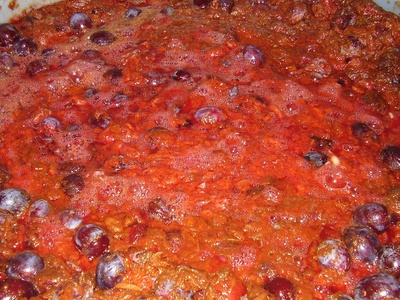
Plum
Juicy stone fruit varying from tart to sweet. Used fresh, in cakes, jams and brandies; numerous cultivars grown commercially and in backyard trees.
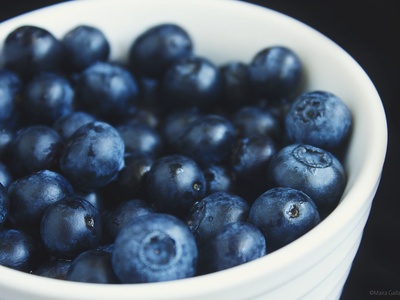
Blueberry (arándano)
Small sweet-tart berries prized for fresh eating and export. Widely cultivated in southern Chile, used in desserts, juices and frozen products; boom crop in recent decades.
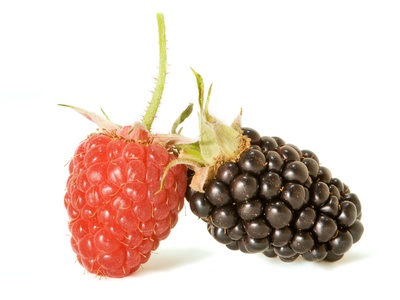
Raspberry (frambuesa)
Delicate, aromatic berries with sweet-tart flavor. Fresh-eaten, frozen, or processed into jams and sauces; grown both commercially and in home gardens.
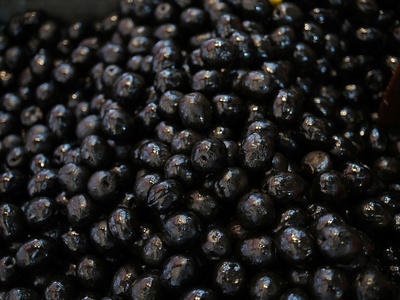
Blackberry (mora)
Juicy dark berries with deep sweet-tart taste. Found wild and cultivated; popular in jams, pies and local desserts, often foraged from hedgerows and riverbanks.
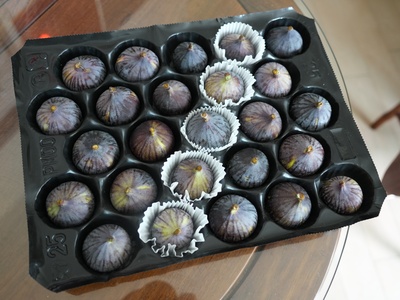
Fig (higo)
Soft, honeyed fruit with tiny seeds and floral sweetness. Eaten fresh, dried, or preserved; common in home orchards and markets, excellent for jams, baking and fresh desserts.
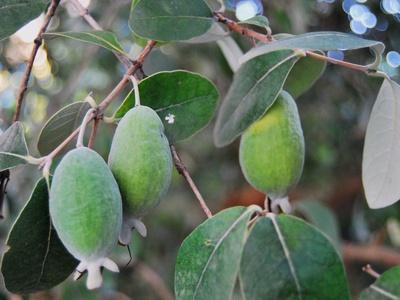
Feijoa (guayabo del Brasil)
Aromatic, tangy-sweet green fruit with perfumed pulp reminiscent of pineapple and mint. Eaten raw, in jams or desserts; seasonally popular in markets and homemade preserves.
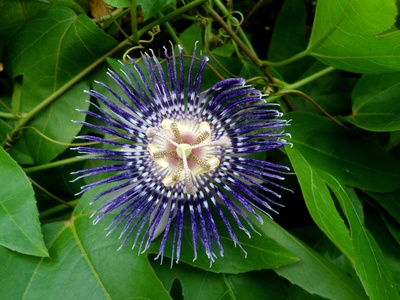
Passionfruit (maracuyá)
Aromatic, tangy pulp filled with crunchy seeds. Used in juices, desserts, cocktails and sauces; tropical flavor grown in suitable microclimates and greenhouse production.
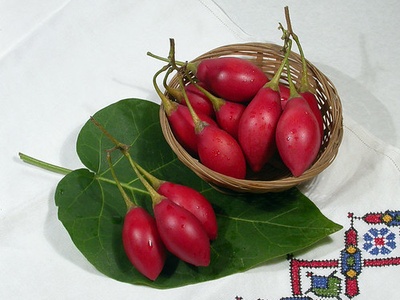
Tamarillo (tomate de árbol)
Egg-shaped fruit with tangy-sweet pulp and a bright sweet-tart flavor. Eaten fresh with sugar, made into sauces, jams and desserts; a distinctive Andean-introduced fruit in Chile.
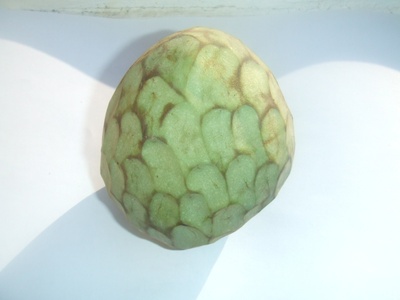
Cherimoya (chirimoya)
Creamy, custard-like pulp with complex flavors of banana, pineapple and citrus. Eaten fresh as a dessert fruit, often chilled and spooned out of the skin.
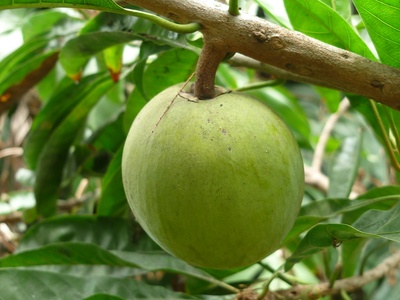
Lucuma
Dry, sweet flesh with caramel and maple notes. Popular in desserts and ice creams in Andean cuisine; grown on a smaller scale in northern Chile’s subtropical valleys.
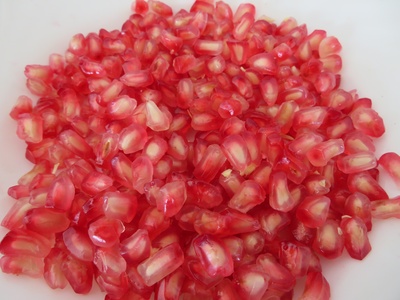
Pomegranate (granada)
Tart-sweet jewel-like seeds used fresh, in salads, juices and syrups. Mediterranean-adapted fruit enjoyed in fresh markets and for decorative culinary use in winter–spring.
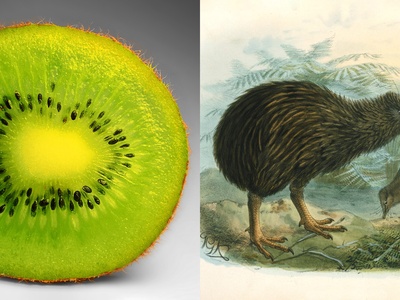
Kiwi
Green, tangy-sweet fruit with small edible seeds and bright acid flavor. Commonly exported and eaten fresh or used in desserts and salads; grown in cooler southern regions.
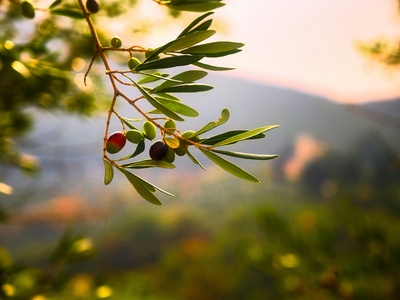
Olive
Firm, bitter fruit often cured or pressed for oil. Table olives are eaten as appetizers and in recipes; olives are a traditional Mediterranean crop in central Chile’s dry valleys.
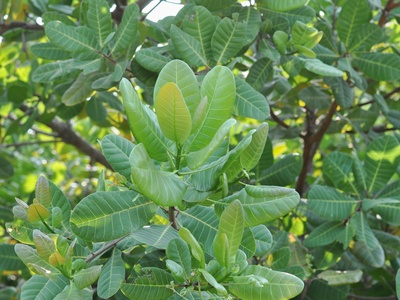
Loquat (nispero)
Small orange fruit with sweet-tart flesh and apricot-like flavor. Eaten fresh, made into jams and liqueurs; common in home gardens and neighborhood trees.
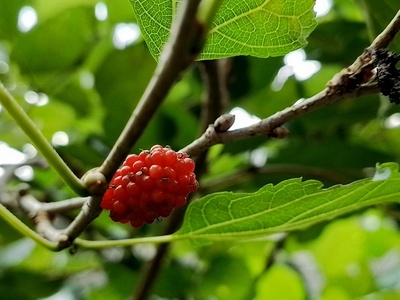
Mulberry (mora blanca/negra)
Sweet, juicy berries ranging from light to dark depending on species. Eaten fresh, used in syrups, jams and pastries; trees commonly dot older urban gardens.
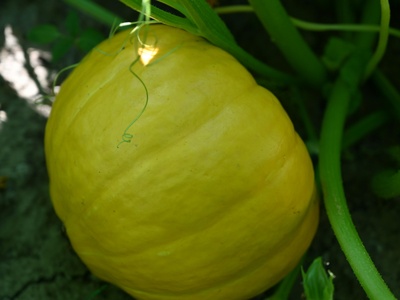
Pepino dulce (pepino melon)
Smooth, sweet fruit with melon-like and cucumbery notes. Eaten fresh or in salads and desserts; distinctive pale-striped flesh and a mild aromatic flavor.
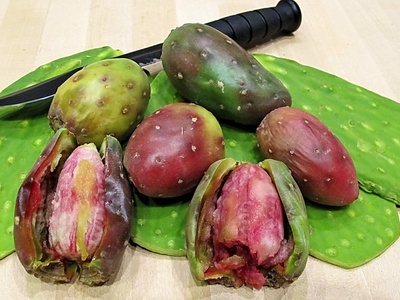
Prickly pear (tuna)
Oval cactus fruits with sweet, watery pulp and crunchy seeds. Eaten fresh, juiced, or made into jams and candies; common in arid gardens and market stalls in northern Chile.
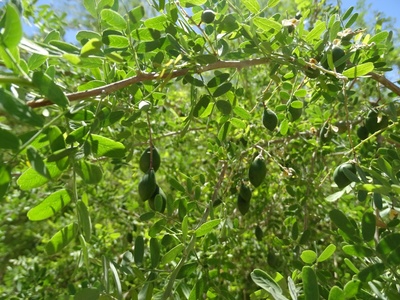
Chañar
Sweet, amber-colored pods eaten fresh or boiled into syrups. Traditional Andean fruit with honey-like flavor, used for medicinal syrups and regional sweets in arid northern landscapes.
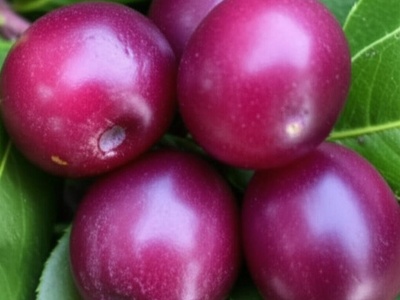
Peumo
Red to purple fleshy berries with a mild sweet-acid flavor. Eaten raw, fermented into chicha or used in local preserves; common in sclerophyll forests and urban plantings.
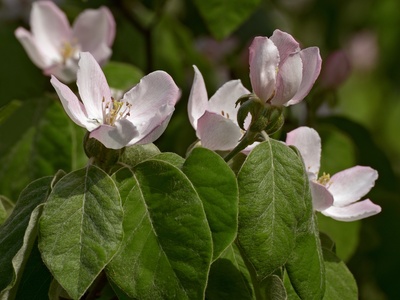
Quince (membrillo)
Aromatic, hard fruit that becomes sweet when cooked. Primarily processed into membrillo paste, jams and desserts; valued for its perfume and preserving qualities.
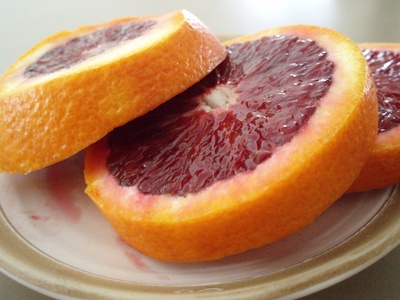
Orange (naranja)
Sweet, juicy citrus eaten fresh or juiced. Widely grown in northern and central valleys for domestic consumption and processing; bright winter-spring fruit in Chilean markets.
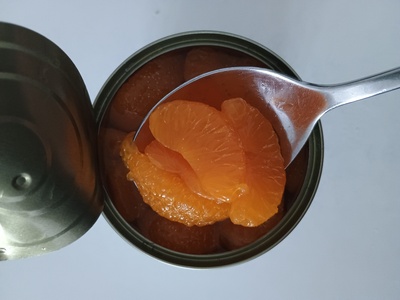
Mandarin (mandarina)
Small sweet citrus with easy-to-peel skin and fragrant aroma. Eaten fresh, used for juices and desserts; winter fruit popular in Chile’s citrus-growing regions.
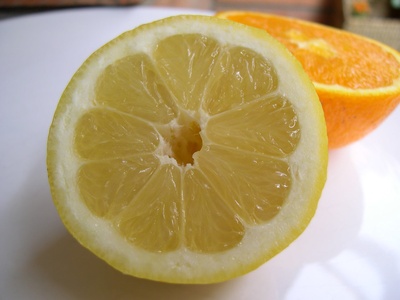
Lemon (limón)
Aromatic acidic fruit used for juice, condiments and cooking. Widely cultivated in central Chile with year-round availability and peaks in cooler months.
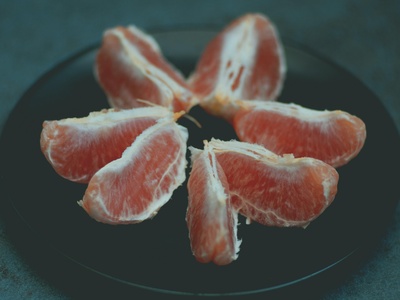
Grapefruit (pomelo)
Large tart-sweet citrus with juicy segments and pleasant bitterness. Eaten fresh for breakfast or juiced; grown in coastal mediterranean zones for domestic markets.
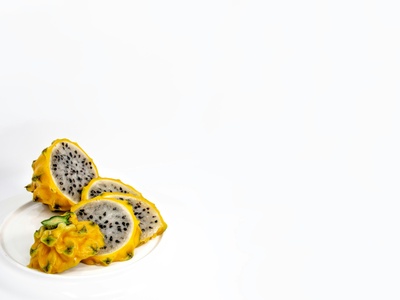
Pitaya (dragon fruit)
Exotic bright-skinned fruit with mildly sweet, kiwi-like flesh studded with tiny seeds. Grown in northern microclimates and sold fresh or in smoothies and desserts.
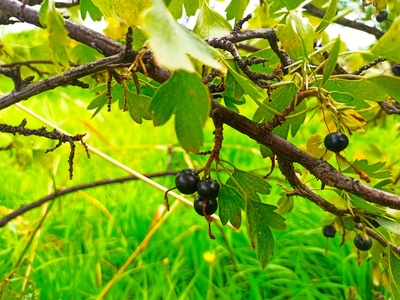
Blackcurrant (grosellero negro)
Intensely tart, aromatic berries used in syrups, jams and liqueurs. Grown on smaller commercial plots for processing and artisanal products in cooler regions.
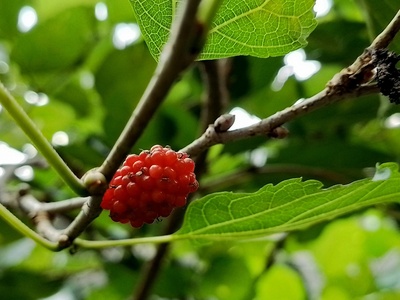
Boysenberry
A complex-flavored hybrid between blackberry, raspberry and loganberry with deep sweet-tart notes. Used fresh, frozen, or processed into jams and desserts; valued by pick-your-own farms and artisans.
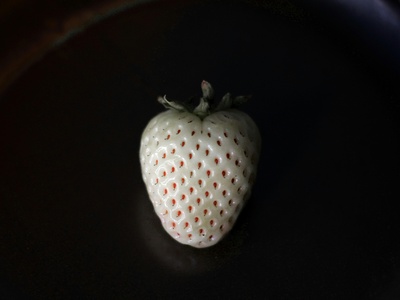
White strawberry (fragaria chiloensis var.)
Lighter-colored relatives of the Chilean strawberry with delicate aromatic flavor. Foraged along coasts and dunes; appreciated by heritage growers and culinary aficionados for unique scent and taste.
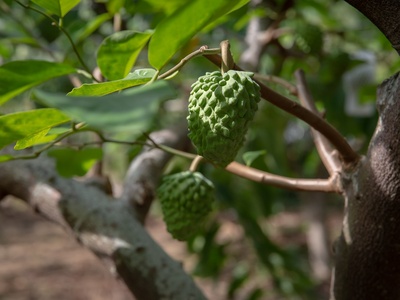
Atemoya
Hybrid custard apple with creamy, sweet pulp combining cherimoya and sugar-apple flavors. Eaten fresh as dessert fruit, prized for its smooth texture and tropical taste where microclimates permit.
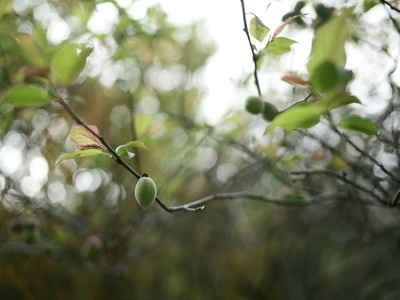
Kiwiberry (hardy kiwi)
Small, smooth-skinned kiwifruit eaten whole with intense sweet-tart flavor. Grown on smaller plots for fresh markets and as a niche crop in cooler Chilean regions.
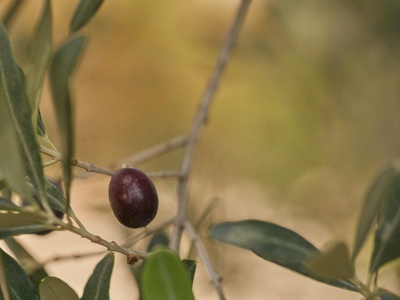
Morroncillo (native berry)
Small red berries with tart-sweet flavor used historically by indigenous communities. Eaten fresh or in preserves; shrub grows in temperate rainforests and is part of local foraging traditions.
